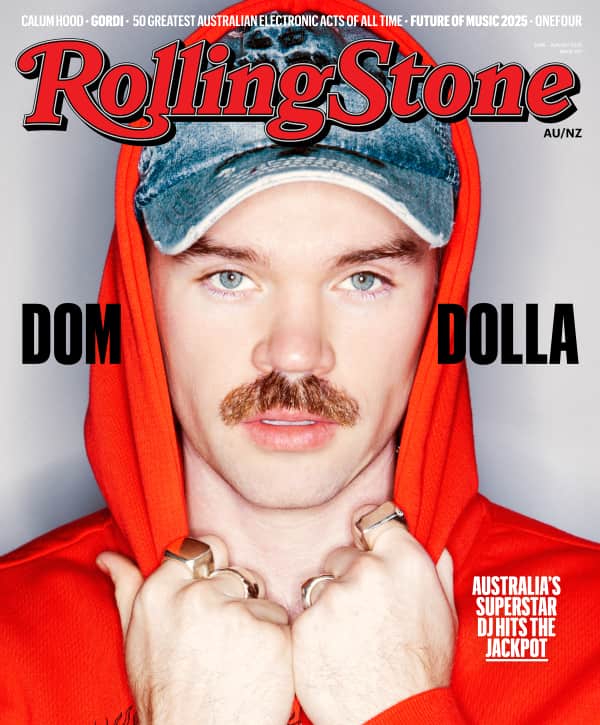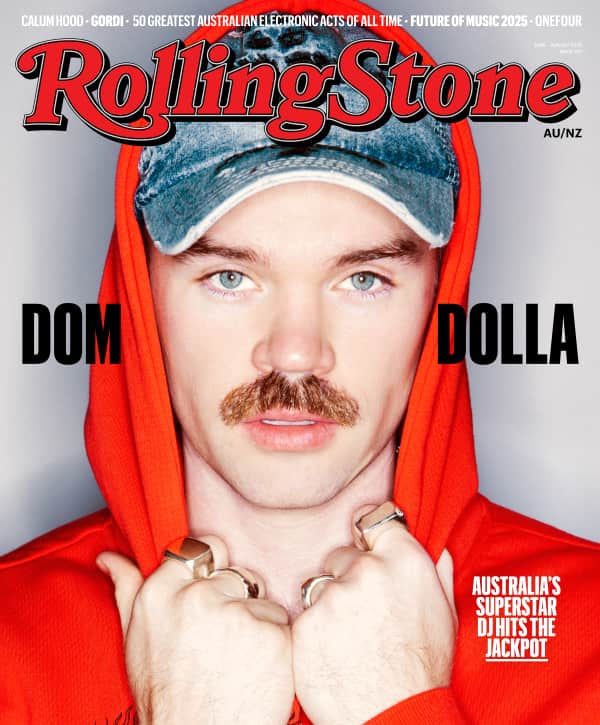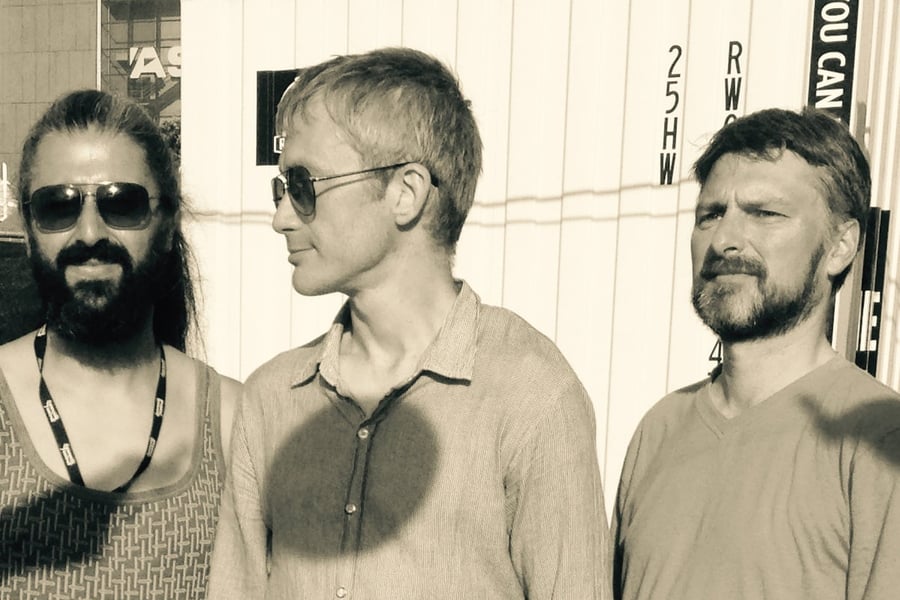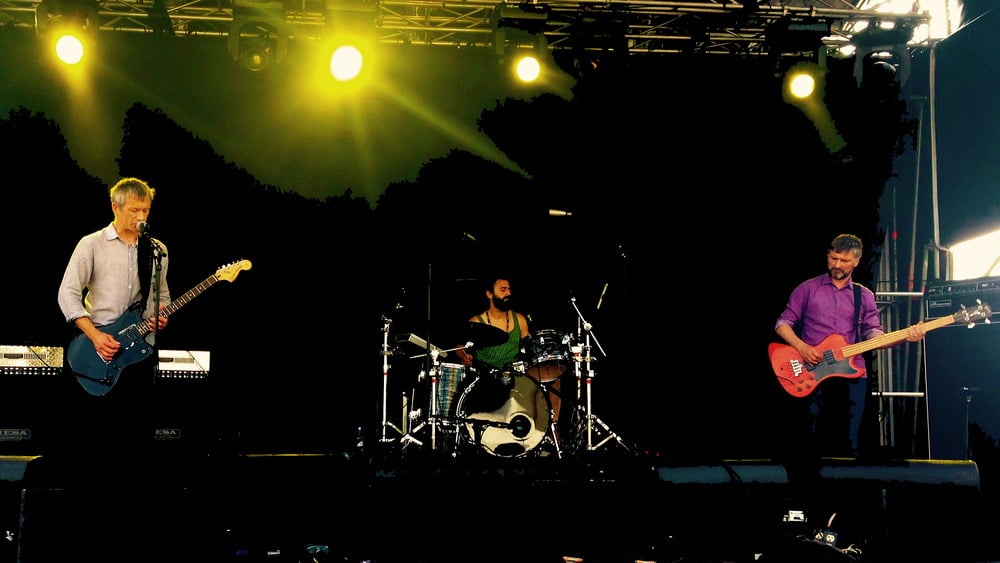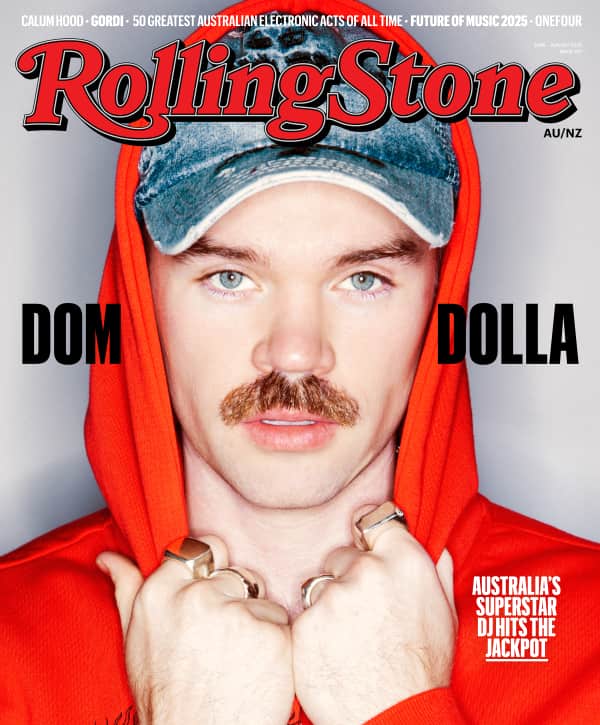In 1997, the cult Ōtepoti/Dunedin trio High Dependency Unit (HDU) was throwing everything they had at the dream of making it as a band. They weren’t earning a lot, but the rent was cheap, the cost of living hadn’t shot through the roof, and there was electricity rippling through the air.
That year, Neil Phillips (bass, guitar), Tristan Dingemans (guitar, vocals), and Dino Karlis (drums, percussion, synth, and samples) headed into Tailgater Studios with the engineer and producer Dale Cotton, assisted by Nick Abbott, to record one of the masterpieces in their hefty catalogue, the Higher EP.
Over five expansive tracks that reach into the infinite, HDU feeds sci-fi references, jittery rhythms, and richly textural guitar and synthesiser drones into an all consuming ocean of sound. As the EP opens with “Babaya”, Dingemans sings in languidly haunted tones of “the blue matrix blue,” creating universes and “all we need in the next world.”
It’s a fitting portal into the band’s explorations of noise rock, wall-melting psychedelia, and punk, all rendered with a hypnotic sensibility informed by techno, goa trance, and ambient music. In an era when guitar bands could be dismissive of dance music and DJing, HDU were more than happy to stay out until dawn at an outdoor rave.
Twenty-eight years after Higher was released on CD by Flying Nun Records, it’s time for these songs to find new life.
This time around, the vector for their transmission is the EP’s first-ever vinyl reissue, arriving via Waikato’s Haymaker Records, the label that issued Christoph El Truento’s beloved dub reggae album, Dubs From the Neighbourhood. On the surface, following up with ambient noise rock might seem like a leap, but when you hear Higher’s immersive depth, it all makes sense.
Serendipitously, between November 20th-29th, HDU are touring Aotearoa and Te Waipounamu for the first time in close to a decade, playing shows from Ōtepoti to Tāmaki Makaurau, where they’ll be appearing at The Others Way. Halfway through the run, they’ll be playing a special double headline show in Te Whanganui-a-Tara/Wellington alongside the legendary Zamrock pioneers W.I.T.C.H.
Love Music?
Get your daily dose of everything happening in Australian/New Zealand music and globally.
Ahead of the tour, Rolling Stone AU/NZ caught up with Dino and Tristan by video call, from their respective homes in Berlin and Ōtepoti. Over a lively, wide-ranging conversation, they reflected on their experiences in the 1990s and early 2000s, while looking forward to what comes next.
High Dependency Unit are touring New Zealand between November 20-29th. Ticket information is available here. Higher is out now through Haymaker Records.
Rolling Stone AU/NZ: Let’s start by ripping a Band-Aid off.
Dino: Can we talk about how we get described as post-rock now? I’m not offended on any level. I guess when we were doing what we were doing, we could have been described like that. I just don’t think we’d ever heard the term or gave a shit?
Tristan: Psychedelic punk rock. A great reviewer talked about, not Stiff Little Melting Alarm Clocks or whatever, but Punk Floyd. We were weirdly inspired by dance music. Not in the music, but definitely in our thinking.
Rolling Stone AU/NZ: Post-rock implies moving beyond rock, but maybe you were actually regressing.
Tristan: Without being incredibly overt, we were taking it back to a ritualistic aspect. I’ve been thinking a lot about community. There is a dance music community in Dunedin, and these days we might only come together once a year, but it’s still been profoundly influential. It’s very rich, all these wonderful, transcendent experiences on the dancefloor. That’s the fundamental thing. We took that energy and ethos.
Ultimately, even though we are incredibly dark — we are a dark-flavoured band — we just like minor keys. We took the positivity we gleaned from dance music, especially with Higher. “Babaya”, for example, the lyric is specifically about an acid trip I had at a Winter Solstice party, where I decided to start meditating. It was just an incredible experience. I talk about a blue matrix in that song, which predates the film, by the way.
Rolling Stone AU/NZ: What was it about the music at outdoor raves that stuck with you?
Tristan: A beat with that sort of melodic, washed-out thing over the top, utterly inspiring. Dino and I had this incredible mushroom trip one night, which basically fed the next two releases. We wrote “Abstinence”, and we came up with a whole bunch of the stuff that was on Sum of the Few. I discovered everything that night.
Rolling Stone AU/NZ: Tell me about the Dunedin rave scene in the early 1990s?
Dino: The crew we knew the best was called Eudeamony Tribe. As with all of these things, the really good ones are very D.I.Y. The best ones were out in the forest or in someone’s paddock. The audience size varied from tens to hundreds, but they were always great. No alcohol, hidden DJs. It was important that the DJ wasn’t the centre of attention. I have a hard time doing the nightclub thing. Now I’m in Berlin, but I’d still rather be out under the stars.
Rolling Stone AU/NZ: As band musicians, were you guys outliers at the raves?
Dino: A lot of people were dipping their toes in. We might have been outliers for being early to bring it back into our music, but it was a small community.
Tristan: It wasn’t until Dino got a Roland Octapad and a kick drum trigger that we really brought it in. Part of what we were doing came from that thinking, and part from working with Dale Cotton. Brian Eno is in his holy trinity. So there was an ambient sensibility, exquisitely recorded and combined with our inventions. I think it worked out really well.
Dino: I want to come back to that post-rock thing. Jazz was the other thing that was in there, too. Of course, this all sits with this post-rock idea of cross-pollinating, but we never made progressive rock. Progressive rock is very much not one of the things it is. Part of it was about having fun and expanding the mind. The other part was, let’s just make something that needs to be made. Sometimes you want to hear something that doesn’t exist, so you make it.
Rolling Stone AU/NZ: That’s what Ruban Nielson did when he started Unknown Mortal Orchestra. He was making the records he couldn’t find in the record bins.
Dino: I think that was what we were doing. That still drives me today. I want to hear some music, and I’m pretty sure it doesn’t exist, so I’ll make it.
Rolling Stone AU/NZ: In October, Haymaker Records reissued your Higher EP (1997), which is basically an album. By the time you made Higher, you’d been recording and touring for a few years. What do you think are the big lessons you guys had learned by that point?
Tristan: Less white noise. After one show we played at [the old] Bar Bodega [in Wellington], I realised we’d had the white noise hissing away for an hour. I started to get more dynamic. I think a lot of the cross-channel mixing stuff we did grew out of that as well.
Dino: All of us started to play with more subtlety and depth.
Tristan: “Lull” [off Higher] is a wonderful song. It’s unlike anything we’ve done before, because there were no distortion pedals, but we were almost scared to play it. We were worried about what [the producer] Brendan Hoffman was going to say.
Dino: I’m super proud and happy that we rereleased Higher. I think it really stands on its own. It’s great to have it on vinyl.
Rolling Stone AU/NZ: Were you aware of what Haymaker Records was doing before they rereleased Higher for you?
Dino: I hadn’t heard of them. Jim Pinckney [aka Stinky Jim] put us in touch out of the blue. I trust Jim’s judgement a lot. If he says someone is a stand-up guy, they’re a stand-up guy. I love that there are still people out there running labels like this. It really drives the good parts of the scene. Dave from Haymaker just chooses stuff he likes. I think that is a wonderful thing, because it’s not driven by decisions that are tangential to the music itself.
Rolling Stone AU/NZ: What do you remember about your lives from around when you originally recorded and released Higher?
Dino: We were trying to do as much as possible and be a full-time band. We were broke, working whatever jobs we could do, and putting everything into the music. It was a really fertile time. It was a struggle, too, but that didn’t really matter.
Tristan: We did that recording really quickly, and we were really inventive with it. Getting back to ‘Babaya’ again, I’d finally detuned my guitar down to DADGAG tuning (Celtic tuning). Jimmy Page used to refer to it as his CIA tuning (Celtic-Indian-Arabic). When I was growing up, we didn’t know what it was, but they were utilising four different strings playing the same note, or three playing the same pitch, and the way that riff grows. This is the dance thing again as well.
I did a take with this vocal idea, then we sampled phrases and triggered them from a keyboard. I wanted to get to this essence. There was even a line that went “the algorithm and the fairy tale.” We also had a jam one night where we dropped acid, and that’s where we got the sample for the opening of “Fauxtekra”.
Dino: Higher was all very D.I.Y. We begged, borrowed and stole everything. I think it was recorded on Dale [Cotton’s] eight-track machine. He managed to get his hands on a few nice microphones. I’ve heard the multitracks recently. If you just listen to the drum tracks, they sound like the whole thing. It was so loud in the room. Then we mixed the whole thing overnight in a lockout session at York Street Studio.
Rolling Stone AU/NZ: Back in the ‘90s, there was this whole idea floating around in electronic music that we were in the final years of a race towards the future. Life beyond the year 2000! Was this something you guys felt?
Dino: Personally, I never felt it, but because I’m a sci-fi guy, I liked the aesthetic of it. I liked the concept. I also liked it as a look. That made sense to me.
Tristan: That’s a great door to open in regards to sci-fi and Higher. Our track “Dune” is a direct reference to Frank Herbert’s book and David Lynch’s film adaptation. As far as pop sci-fi goes, that’s a huge part of my makeup. Dune, Joseph Campbell, and Star Wars were really influential stuff. During the dissolution of my first marriage, I wrote a piece of music and set the ‘Litany Against Fear’ passage from Dune against it. It slotted in so beautifully. The ideas around those books are incredible. They’re really inspiring.
Rolling Stone AU/NZ: Now we’re a quarter of the way through the 21st century. If you think back to 1997, what did you think the future would look like?
Dino: I don’t think I was thinking hard enough about capitalism and where that was going at that point.
Tristan: We’re in a different world because of social media. It’s affected society in ways that are almost unfathomable. We’re beginning to see it, but I’ll cut straight to it: calcified spines and chronic migraines in teenagers.
Dino: Infinite Jest [by David Foster Wallace] had some good forecasting about technology. People with special masks they put on during phone calls so they wouldn’t have to show their feelings, etc. I think another contributor to the idea we were rushing towards the future was how it felt like we were on the tail end of rock music. All its big discoveries and innovations had been done, and everyone was looking for something else.
Rolling Stone AU/NZ: Yeah, for sure.
Dino: There was a time when I felt like it was all done, and there was nothing new left to say. I was quite despondent about it. Then we saw the Dirty Three play. They were brilliant.
Tristan: We would not sound the way we do without seeing those Dirty Three gigs. We got to support them at an orientation. I’ve never seen someone commit that much with their soul, you know.
The closest would be Robert Smith with The Cure in the early 1990s. There’s this tradition with international tours. You get to New Zealand and you fuck around a bit, because no one gives a shit. Perry Bamonte fluffed a keyboard line and shot Robert a cheesy grin. He glared back at him, just frozen with this look like get on with your fucking job. I was grateful. Holy shit, he really cared about being here.
I kind of taught myself how to play electric guitar by listening to some of The Cure’s songs. I learned “A Forest” when I was fifteen or sixteen. It was my first experience with sympathetic strings. I use that concept fundamentally with HDU.
Dino: The Jesus Lizard had that dedication, and obviously Shellac as well. What’s really been making me listen lately is Beatrice Dillon. Just perfect, deeply state-altering music. Perfectly crafted.
View this post on Instagram
Rolling Stone AU/NZ: Later this month, you’ll be touring New Zealand for the first time in close to a decade. It’s worth noting that in Wellington, you’re playing a double headline show with the Zamrock pioneers W.I.T.C.H.
Dino: I never saw that coming. It’s going to be great. I’ve heard of them over the years, but they were always in my periphery. It seems like an odd combo, but it also seems like the right combo.
Tristan: I was quietly terrified at the outset before this tour, but now I feel okay. I haven’t stopped playing, and I’m just itching to present my rig to Dino and Neil. I’m so happy with what I’ve got, tone and colour-wise.
Dino: It’s going to be something else. I’ve spent the last ten years playing quieter music and learning to have a better touch at lower volume. It’s been interesting relearning the older vocabulary while rehearsing. Playing louder and more simply, you have to have clear ideas and be very direct with them.
Rolling Stone AU/NZ: It must be great to have this all come together just after Higher was reissued.
Dino: The response to the reissue has been mindblowing. I expected a few people to care. I didn’t expect it to be all over social media. That’s one of the good things about today. You don’t just hear about the response, you get to see it.




















